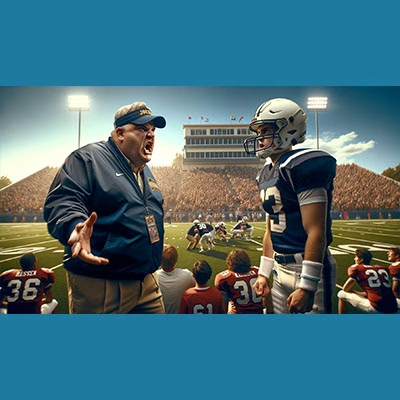
The dream of playing college football with a full athletic scholarship is one of the biggest driving forces for high school athletes. However, the reality of the numbers can be a crucial wake-up call that shapes a successful recruiting strategy.
To help you navigate this competitive landscape, Awe Video & Photo Studio has gathered the latest statistics from the NCAA and industry experts to give you the most accurate picture of your true odds.
The Reality Check: Roster Spots vs. Scholarships
When assessing your chances, it’s important to distinguish between earning a roster spot (just playing in college) and earning an athletic scholarship. The odds drop significantly for the latter. Based on the latest data from the NCAA (2023-2024 participation):
High School Football Players |
Chance of Playing in College |
Odds Against You |
|
1,028,761 |
7.5% reach the NCAA level (D1, D2, D3) |
1 in 13 |
| 31,891.591 |
3.1% reach the NCAA Division I level |
1 in 33 |
The Odds of Earning a Scholarship
While a small percentage of high school athletes will make a college roster, the odds of receiving a meaningful athletic scholarship are even slimmer:
• Fewer than 2% of all high school student-athletes across all sports will receive an athletic scholarship to compete in college at the Division I or II level.
• For a highly competitive full-ride scholarship, the odds are often cited as closer to 1 in 42 senior high school football players (or approximately 2.4%), with the chance of landing a full scholarship at the highly coveted FBS level being 1 in 92.
College Football Scholarship Limits by Division
The scarcity of scholarships is driven by strict NCAA limits on the amount of aid a program can award.
Division | Type of Scholarship | Maximum Annual Scholarships | Key Facts |
| NCAA Division I FBS | Headcount (Full-Ride) | 85 | Every scholarship awarded must be a full scholarship covering tuition, room, board, books, and fees. |
| NCAA Division I FCS | Equivalency | 63 | Scholarships can be divided among a larger number of players (e.g., two players can share one scholarship), meaning most players receive partial aid. |
| NCAA Division II (D-II) | Equivalency | 36 | Scholarships are partial and distributed to multiple players. Most D-II players receive partial scholarships. |
| NCAA Division III (D-III) | None (Forbidden) | 0 | These schools do not offer athletic scholarships. They rely on enticing recruits with financial aid packages and merit/need-based grants. |
| NAIA | Equivalency | 24 | The NAIA is a separate entity that can offer athletic scholarships, similar to NCAA DII. |
The Future: Potential Changes for 2025-2026
The landscape of college football financing is currently undergoing massive changes. As part of the proposed House v. NCAA settlement, significant shifts are expected in scholarship limits that could increase the number of full scholarships available:
• Potential Change: Beginning in the 2025-2026 season, NCAA Division I football teams (both FBS and FCS) may be able to have a roster limit of 105 players, all of whom would be eligible for full scholarships.
While this rule change is still in flux, it indicates that the number of available scholarships could potentially increase at the highest level. Regardless of the changes, the competition to earn one of those spots remains fierce.
Your Takeaway: The path to a football scholarship is incredibly challenging, especially for the few coveted full-ride spots at the Division I FBS level. Creating an exceptional highlight video through Awe Video & Photo Studio is not just an advantage—it is an absolute necessity to stand out and ensure your film is immediately impressive to college coaches.